Face Swapping vs Face Morphing: What sets them apart?
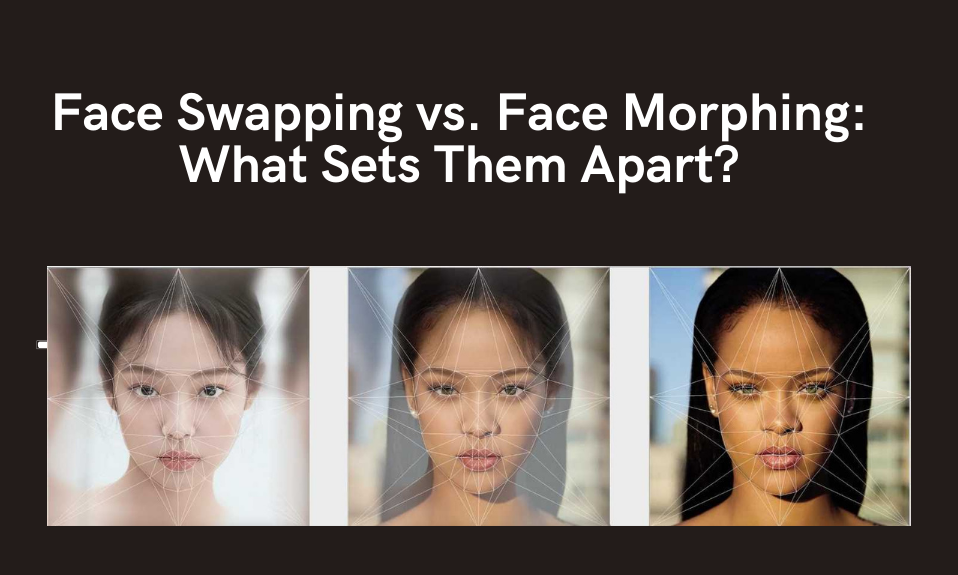
The digital world is bringing innovations to humans and making them aww. The same goes for photography and videography. They have undergone a revolution over the past few years. One of the incredible transformations we see today is the art of digital manipulation. People can easily switch faces; it looks so real that one cannot identify them at first glance.
Face Swapping and face Morphing are two essential techniques in digital manipulation. While they may look similar at first glance, people mostly use them interchangeably. But they are different. Each method has its unique qualities and applications.
This article will talk about face swapping vs. face morphing: its origin, applications, and what are the tools people use while using each specific technique. So, without any further due, let's begin.

Face Swapping and Face Morphing: What are they?
Both techniques are often taken as one, but they are slightly different. Face Swapping, as the name suggests, is a technique that involves detecting and extracting the face from one image and replacing it with a face from another image. Its main goal is to make the swapped face look as natural and real as possible.
Face Morphing, on the other side, is the smooth transition of one face to another in the sequence of the images. It's a gradual change from one face to another. As you see in movies, one face smoothly turns into another.
Their History & Evolution
If we talk about face swapping, it emerges with the evolution of computer graphics and advanced software. Initially, it was a fun and fantastic tool to make face-swap playful, funny family photos. Later, it was used in the market for greater purposes.
Face morphing can be traced back to early animation when artists used it to transition faces in their cartoons and animations smoothly.

What are the Common Applications of Face Swapping & Face Morphing?
Both techniques are popular in the digital world and have many applications. They are primarily used for fun and entertainment and to create a moment of laughter for the people. Let's briefly discuss different common applications of face swapping and morphing.
- Face Swapping
Here are some of the face-swapping applications:
- It is used in the entertainment industry. Have you seen memes? They showcased this technique of face swapping.
- Face swapping apps and filters have become social media sensations because they bring engagement and audience.
- This technique is also used in gaming, where a player can upload his face to a game character.
- It is used to protect an individual identity while maintaining the authenticity of the video footage.
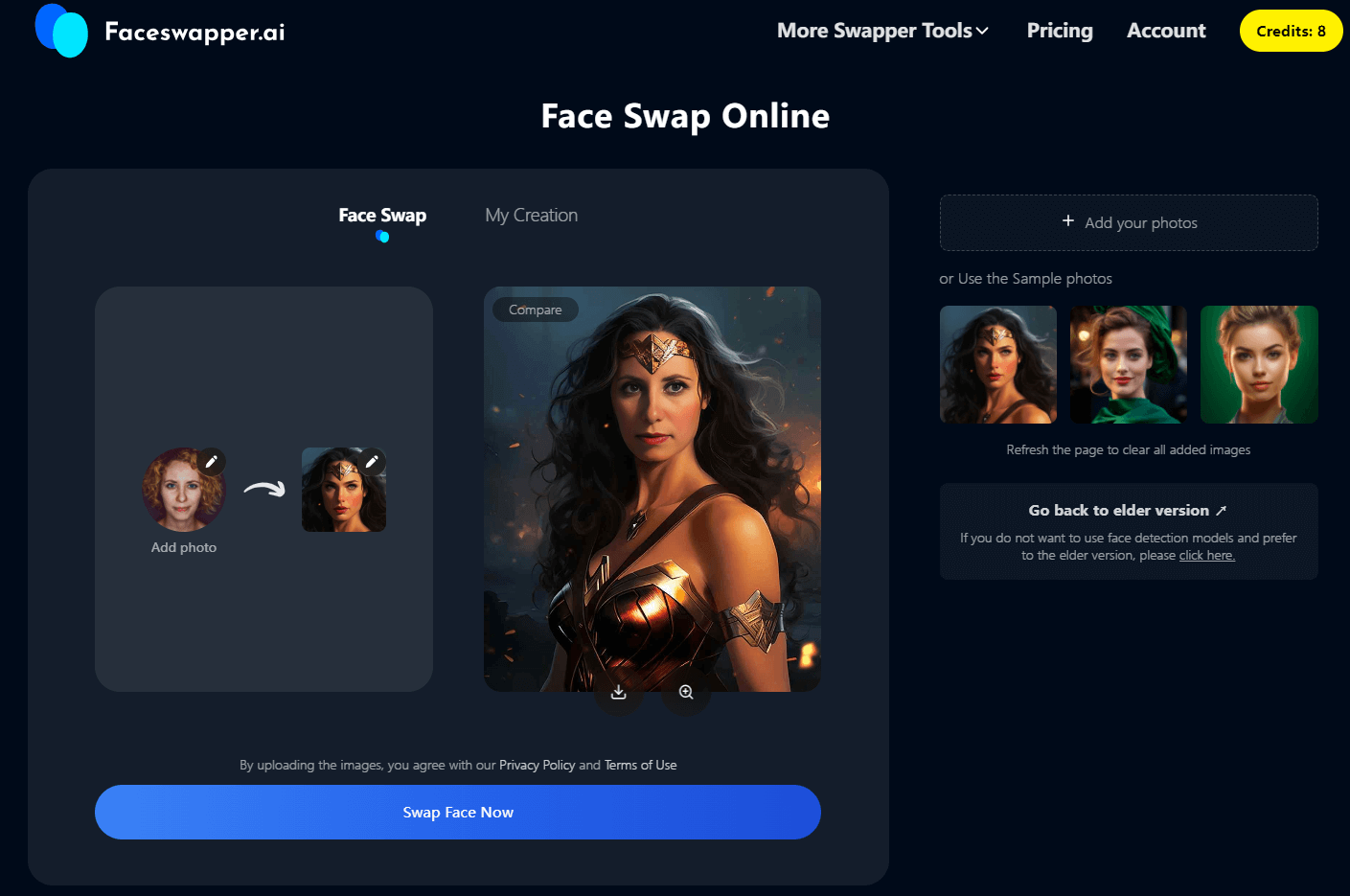
2. Face Morphing
Here are some of the face morphing applications:
- It is used in movies to transform the characters.
- This technique is also used in forensic investigations to predict how a missing person may look after a few years.
- Advertising industries use face morphing to morph their brand ambassador's face into the product to create visual effects.
- Digital artists also use this technique to showcase evolution, transition, or amalgamations in artistic expression.
- Have you seen Michael Jackson's music video "Black or White". They also used this technique in it.
Technical Differences of Face Swap Vs. Morph
Now, let's discuss the technical difference between face morphing and swapping. What software do they use?
Face Swap
- Definition: Face swap involves replacing one person's face in an image with another person's face, resulting in a new image where the identities are swapped.
- Technical Process: Face swap AI algorithms typically detect and analyze facial features such as eyes, nose, mouth, and contours. They then use this information to seamlessly align and blend the replacement face onto the original face.
- Algorithm Complexity: Face swap algorithms can be complex, involving facial detection, landmark detection, face alignment, and blending techniques to achieve realistic results.
- Applications: Face swap is commonly used for entertainment, such as creating humorous or artistic images, or for practical purposes, like editing group photos.

Faceswapper is a powerful online AI face swap tool that allows users to get excellent and realistic online face swapping effects with Faceswapper. Users can use it for free and earn six credits for their first visit and ten credits per day in their account after logging in.
Faceswapper has also introduced three new features: Magic AVatarly, Animated Face Swap, and Face Cutter.
- Magic Avatarly is very creative, and users can upload selfies of themselves to get 12 creative AI avatars. It's ai generated headshot function. If you need inspiration, you can get inspired by these AI avatar maker-generated results. And it only costs one credit per generation of 12 ai headshots, which is also friendly for free accounts!
- Animated Face Swap users can gif face swap online themselves with funny animated images from their recent collections. They can then create their personal humor emoticons and use them in their chats. Users can also set it as their animated avatar to show off their style and make it stand out to others.
- Face Cutter is an efficient headshot cropper. Suppose you have multi-person group photos and want to make an exclusive big head cutout for each person. In that case, Face Cutter is an efficient assistant. Upload a group photo of multiple people and get each person's face photo instantly with one click.
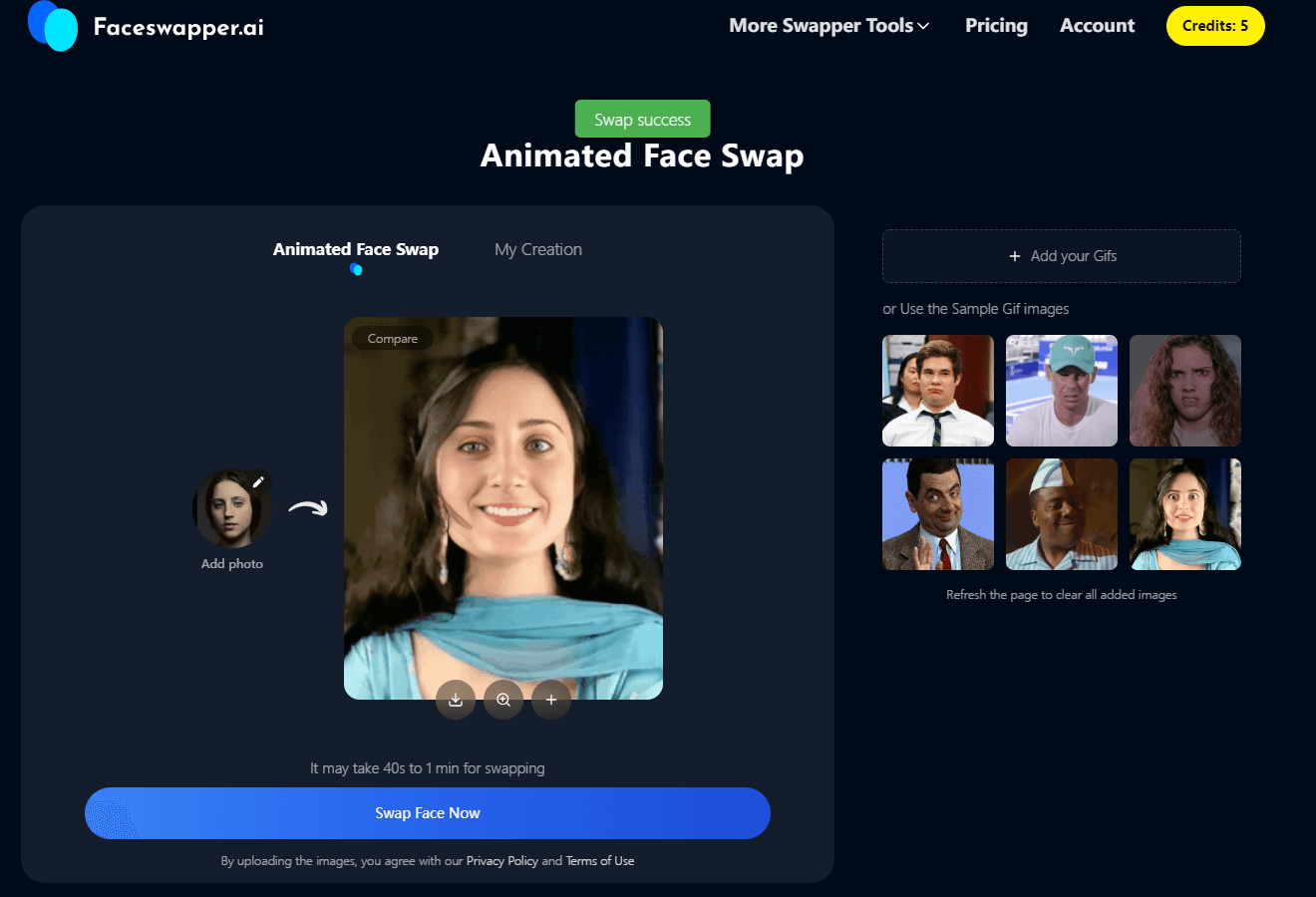
Face Morph
- Definition: Morphing involves smoothly transforming one image into another by blending corresponding pixels and features between the two images.
- Technical Process: Morphing algorithms analyze corresponding points or features between two images and interpolate intermediate shapes and colors to create a smooth transition between them.
- Algorithm Complexity: Morphing algorithms require careful matching of corresponding features and precise interpolation techniques to create seamless transitions.
- Applications: Morphing is often used for special effects in movies, creating smooth transitions between scenes or transforming objects or characters. Users can use it in creative image editing to blend features between faces or objects.
Abrosoft FantaMorph is a powerful and easy-to-use photo morphing software that can create marvelous morphing pictures and movies in real-time. Users can purchase and download the corresponding version according to their needs.
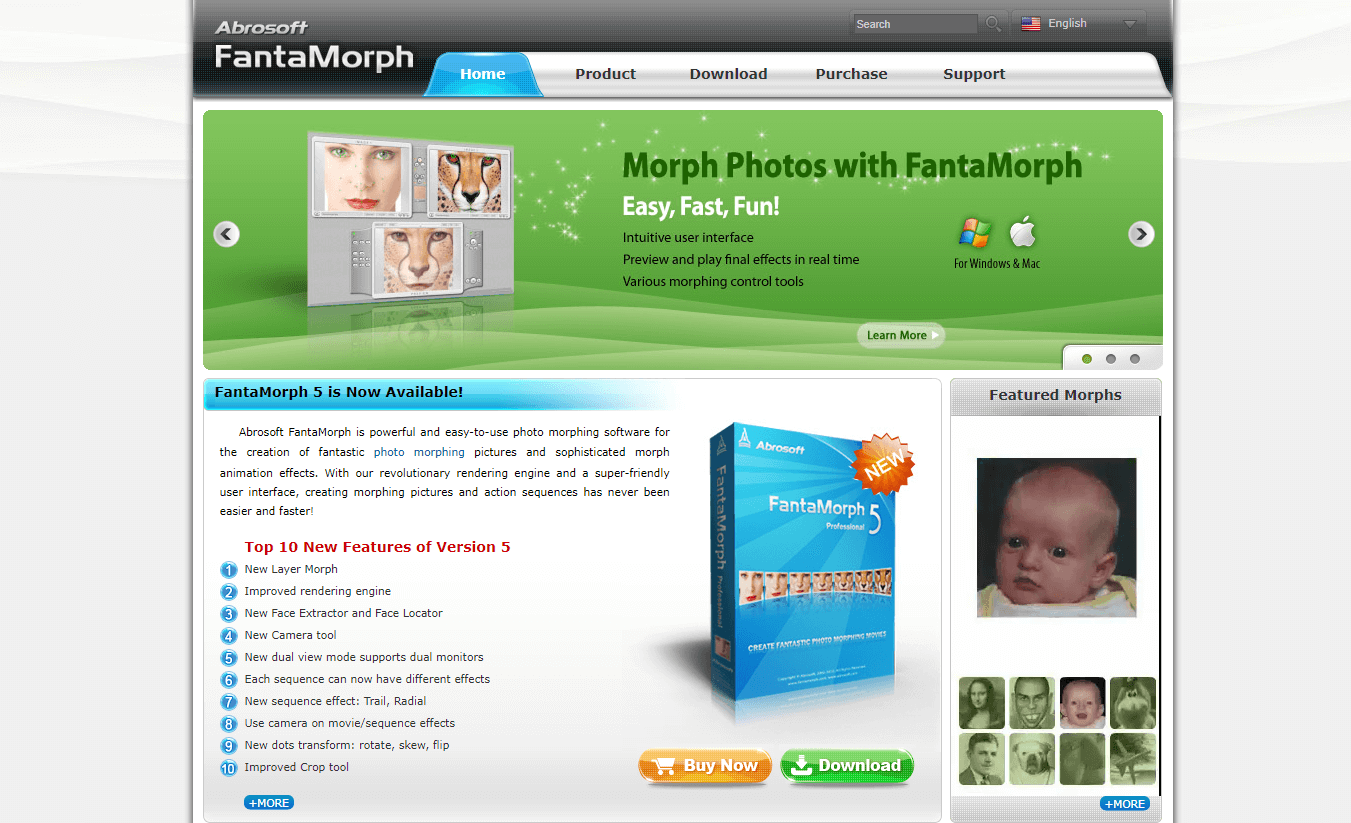
Technical Differences
- Input Requirements: Face swap typically requires two input images, each containing a face to be swapped. Morphing requires two input images to be morphed together.
- Output: In face swap, the output is a new image with one person's face replaced by another's. In morphing, the output is a sequence of intermediate images showing the gradual transition between the two input images.
- Complexity: Face swap algorithms may be more straightforward in identifying and replacing faces but can be complex in aligning and blending features. Morphing algorithms require precise feature matching and interpolation techniques.
- Realism: Face swap aims for a realistic substitution of faces, while morphing aims for a smooth transition between two images, which may only sometimes result in realistic outcomes.
- Applications: Face swap is primarily used for face replacement or manipulation in images, while morphing is used for smooth transitions or transformations between pictures or objects.
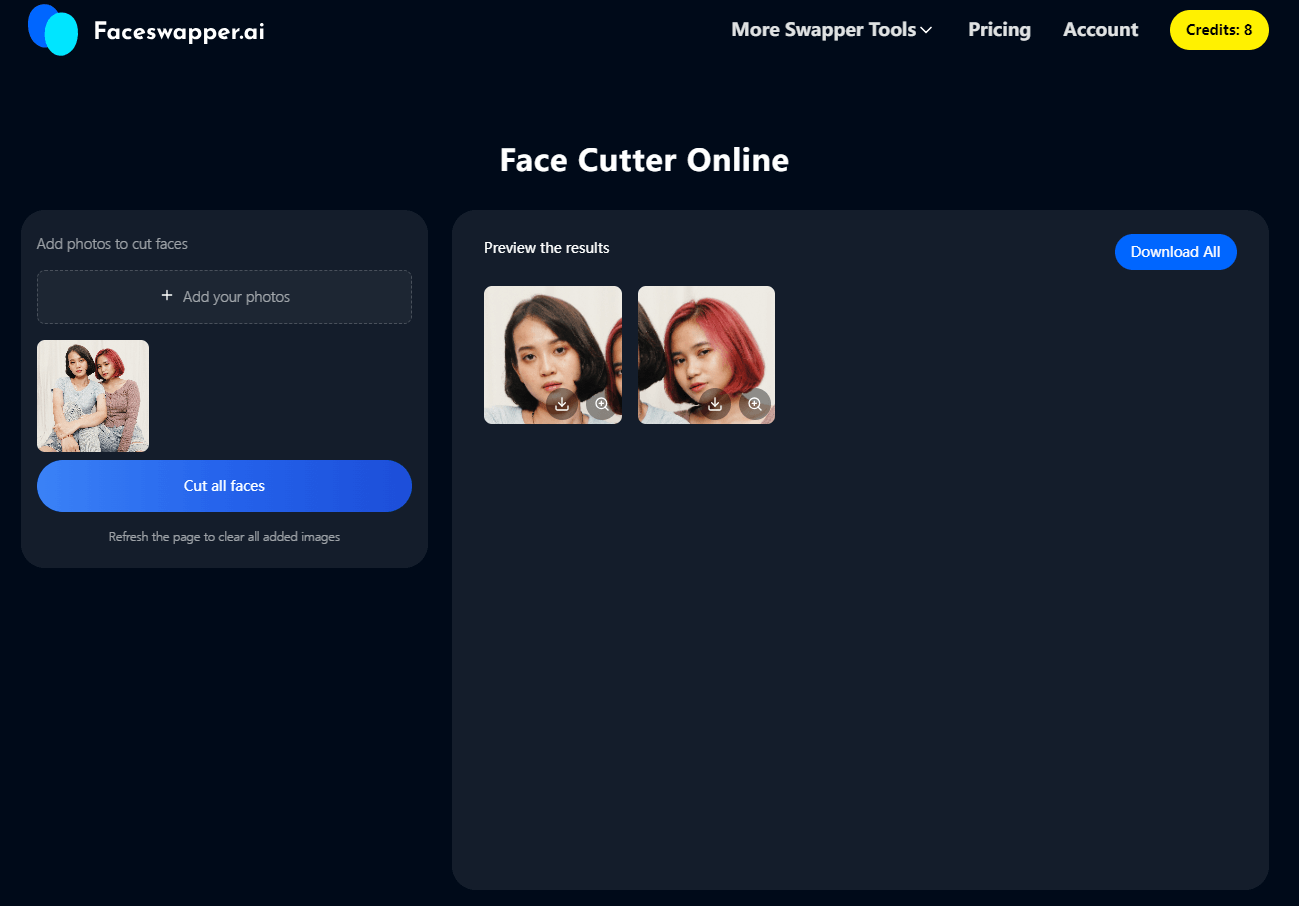
Summing Up
People often use terms such as face swapping and face morphing interchangeably. They are related to changing the faces in photos and videos. However, they have different histories, uses, and techniques. In this digital era, everyone needs to understand these technologies and use them correctly.
So, have fun creating humorous content and making others laugh. Remember to share your experiences with us.